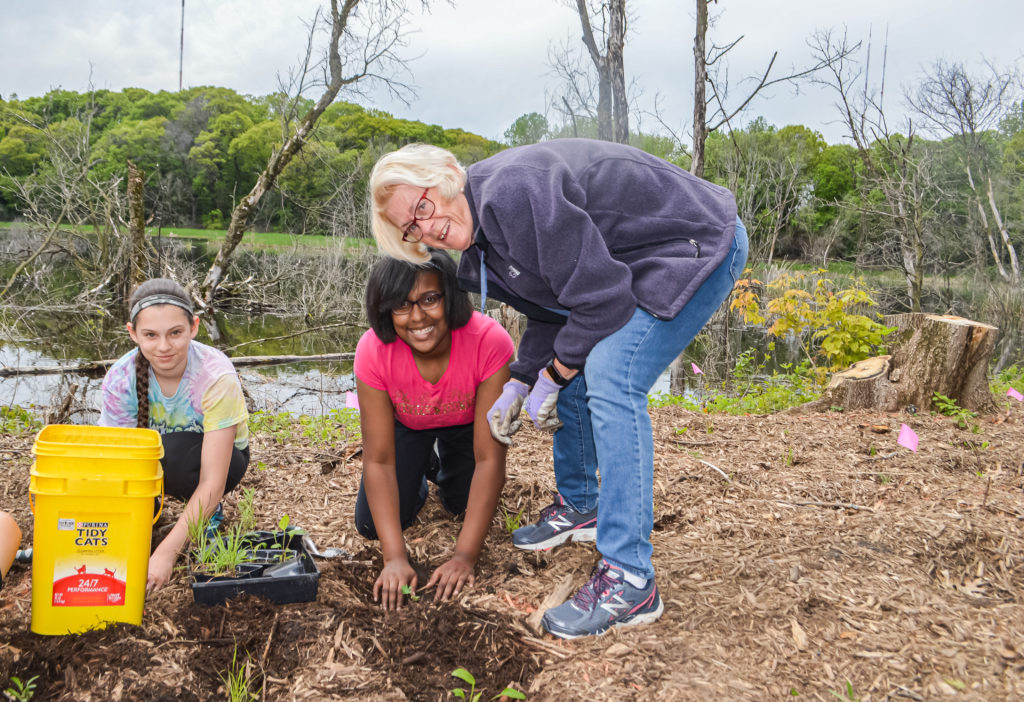
Snail Lake Regional Park Wetland Buffer Gets A Make-Over
By: Sage Passi
Ramsey-Washington Metro Watershed District has a long-standing tradition of engaging youth in the restoration projects that we have been implementing for nearly 20 years. This spring over 300 students from twelve classrooms in 5 east metro schools were invited to participate in a large scale wetland buffer restoration planting project.
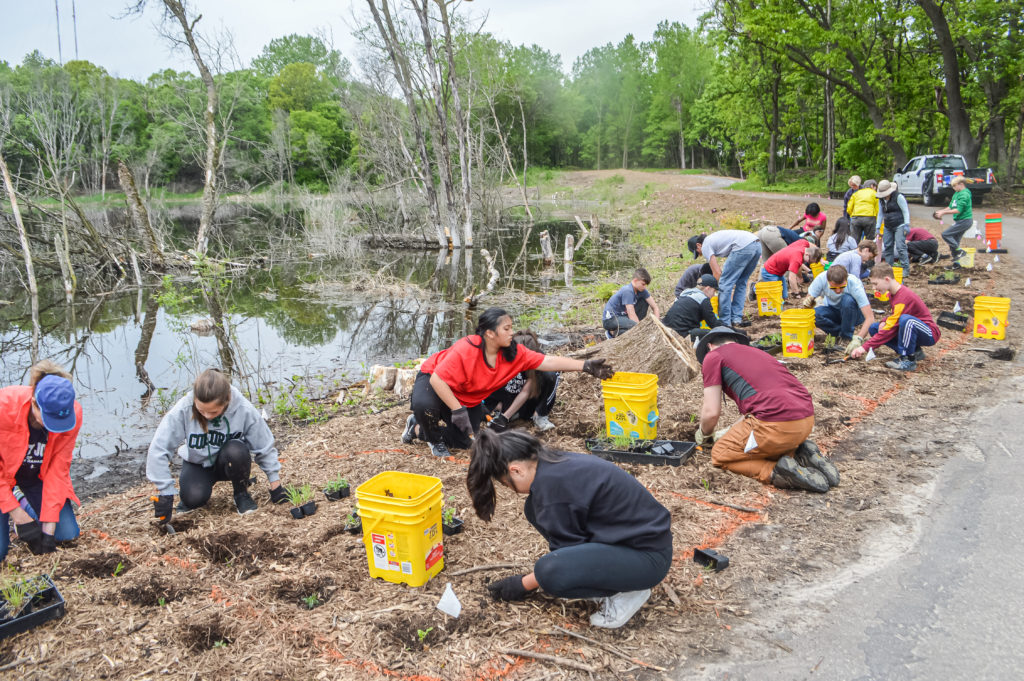
This latest effort, a partnership between our Watershed District and Ramsey County Parks and Recreation in the Snail Lake Regional Park in Shoreview will create a more resilient northern wetland buffer on Wetland A that can withstand flooding and provide better habitat for birds, insect, pollinators, amphibians and fish. Located in Shoreview just east of Snail Lake, this area had been challenged by flooding and encroaching invasive species such as reed canary grass, buckthorn and other non-native trees and plants.
Vadnais-Snail Lake Regional Park is one of the largest tracts of open space within the north Ramsey County Metro area that includes forest, wetland and a lake. The park is home to a variety of wildlife including nesting and migrating waterfowl, songbirds, and raptors. Blanding turtles, an endangered species are known to be found in the Grass Lake section of the park.
Over the winter, massive amounts of buckthorn and other non-native woodland species were cut down and then hauled away in the spring. When I visited the park in early April, this site looked like a tornado hit it. There were tree stumps sticking up everywhere and brush piles stacked to the sky. It was hard to imagine having hundreds of students out there on the ground on their hands and knees. But by late April the brush piles were removed and the stumps cut down.
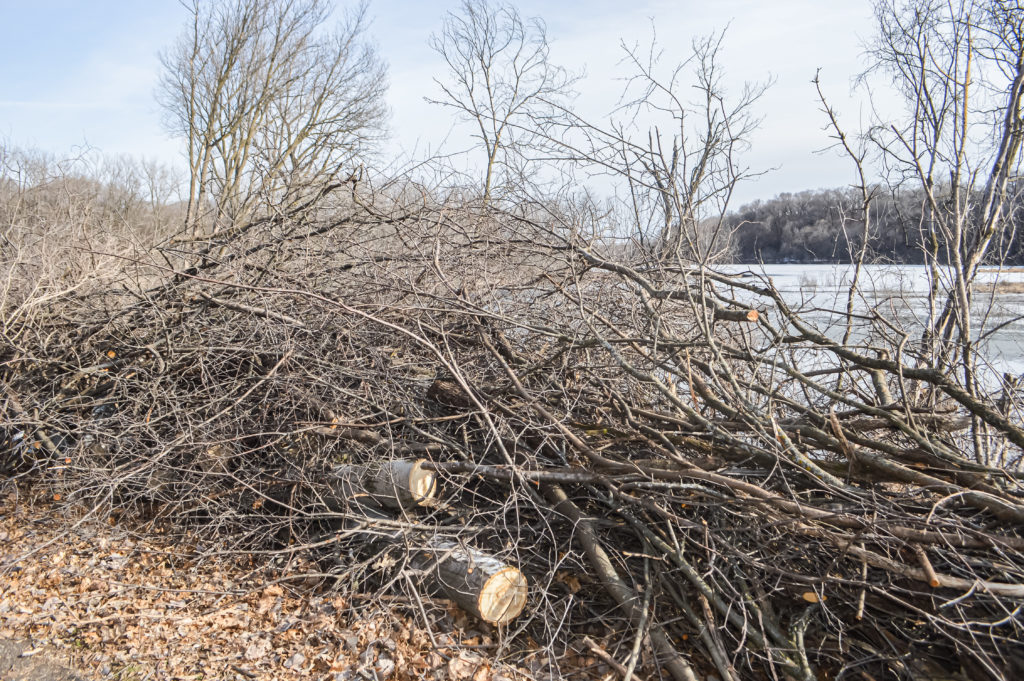
Site preparation work began after that with the control of weedy ground cover species that were day-lighted from the buckthorn removal. After control was completed, mulch was brought in from the Ramsey County Correctional facility. Truckloads of it. This woody layer would provide a weed seed barrier and hold moisture for the diversity of native wildflower and grass seedlings we would be planting in the buffer.
While we were waiting for the planting to begin, in April and early May, I introduced each of the twelve classes from Island Lake Elementary, Roseville Area Middle School, Central Park Elementary, St. Peter Catholic School and St. Johns of Little Canada to the project through a slideshow. I also helped them study the native plants that were being incorporated in the restoration prior to coming out to the site to do the planting. Using our Lake Phalen Shoreland Restoration Walking Tour and Plant Guide as a reference, they had the opportunity to create their own imaginary palette of plants from the list of plants chosen for the upland, wet meadow and emergent areas of the restoration.
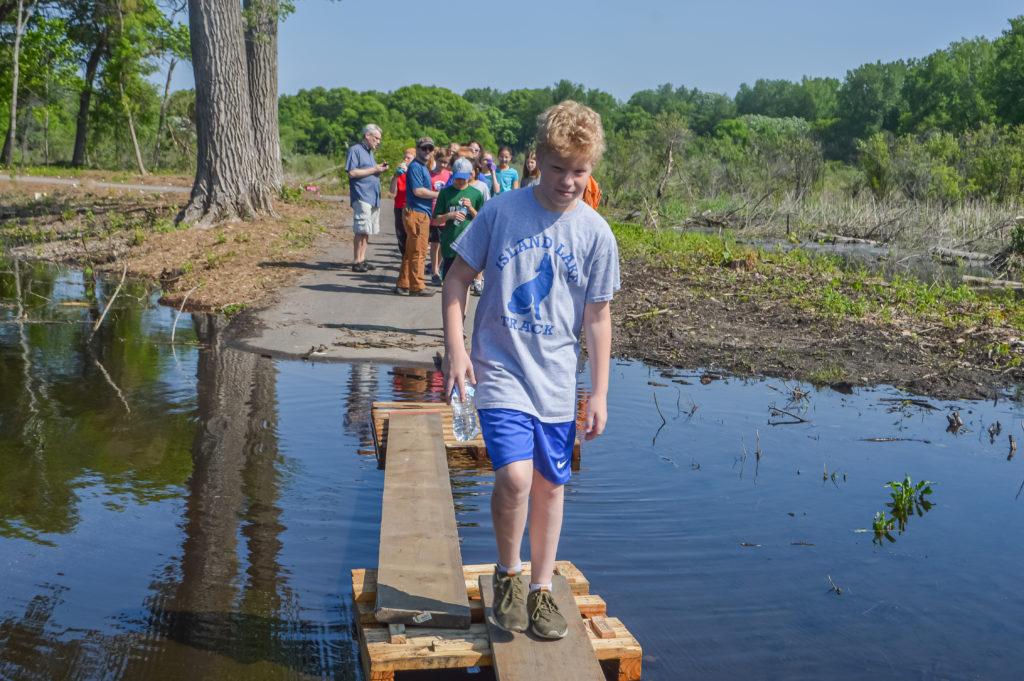
The amount of mulch we had to move around and dig through would prove to be our biggest challenge with the planting.
Most of our planting days, miraculously remained dry, considering the wetness of this spring. Assisting the students with the planting from mid-May to early June were 17 Ramsey County Master Gardeners and Master Naturalists.
It was rewarding to recruit Island Lake students for the project because many of them live very close by and told us they frequent the park. We invited them to come back and see the progress of the project throughout the summer.
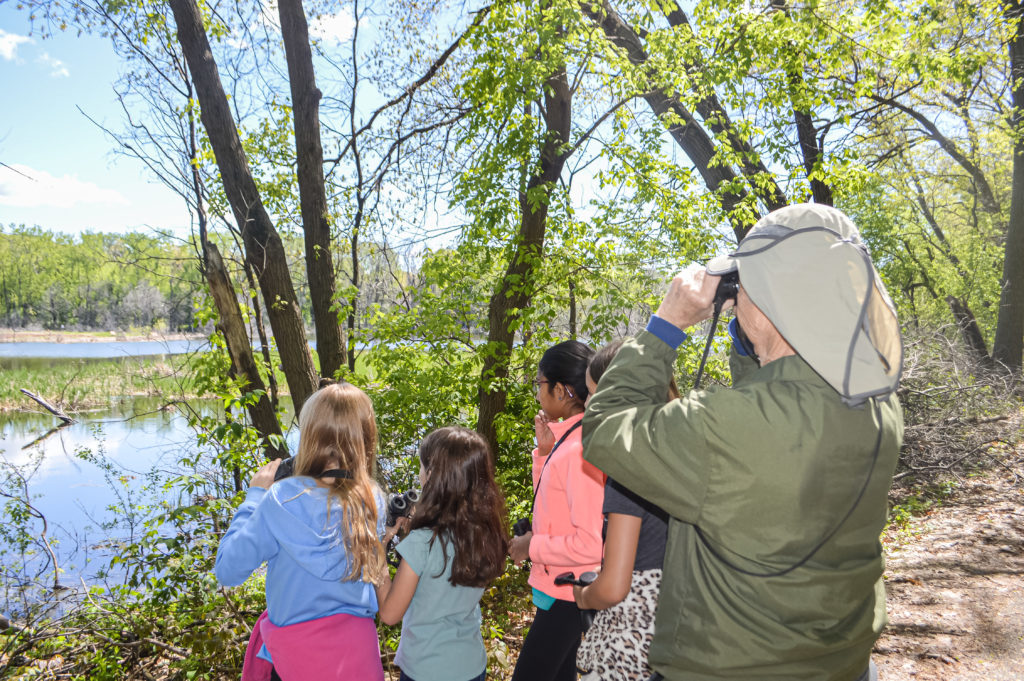
St. Paul Audubon Society volunteers provided bird-watching lessons and binoculars for the students in the woodland area and along the wetland edges in between their planting sessions. Maplewood Nature Center also assisted us by lending binoculars for several of the sessions. Birding was a big hit and there were many sightings of egrets, redstarts, woodpeckers, finches and even a close-up of a sandhill crane, a pair of which are known to nest in the area. We staged our binocular lessons at the fork on the trail that led back to the restoration.
In mid-June, the Big River Big Woods chapter of Wild Ones organized an evening planting with twelve of their members. Master Water Stewards Paul Gardner, Anna Barker, Idelle Peterson and RWMWD staff joined them in their efforts. Urban Roots youth also came out one late afternoon to help with the restoration.
Thanks to all the volunteers who helped us with this large scale restoration project. Come and check out the site. There’s quite a transformation going on here, CLICK the picture below to see them in action!
